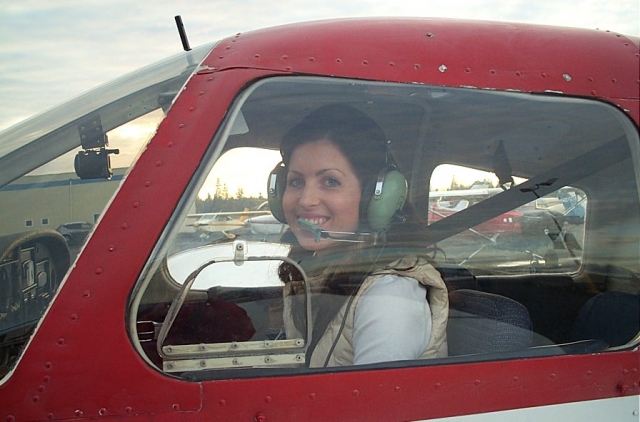Private Pilot Program
- Private Pilot Program
- Overview
- Prerequisites
- Transport Canada's Minimum Requirements for Completion
- Air Training Experience
- Air Training Syllabus
- Student Pilot Permits
- Flight Training Examinations
- Groundschool Information
- Tutorials
- Groundschool Evaluation
- Groundschool Required Equipment
- Groundschool Required Texts
- Recommended Texts
- Groundschool Outline
Successful completion of this Private Pilot Program leads to qualification for a Private Pilot Licence issued by Transport Canada, as well as the issuance of a Certificate of Qualification—Private Pilot by Langley Flying School, Inc. Private Pilots are licensed to fly any single-engine, non-high performance aeroplane requiring a single pilot for operation; they may also fly any additional aeroplane endorsed on their licence—including multi-engine, seaplanes and high performance aircraft—in any condition of flight—including day, night or in cloud conditions—provided they are properly rated on their Private Pilot Licence.
A Private Pilot Licence is required by all students enrolling in a Commercial Pilot training program.
Overview
To qualify as a Private Pilot, students must undergo two examinations—one is a flight test conducted in an aircraft with an examiner, and the other is a written examination conducted by Transport Canada. There are time limits on when these examinations must occur—the flight test must be completed no later than two years after successfully completing the written examination, and the written examination, in turn, must be completed no later than one year after successfully completing the flight test. Private Pilot training is therefore oriented towards preparing students for these two examinations—that is, the flight training portion prepares students for the flight test, while the groundschool portion prepares students for the written examination. While flight training is conducted one-on-one with a Flight Instructor, groundschool is normally conducted in a conventional classroom setting. All training must conform with standards established by Transport Canada, and the aircraft used for training must meet the maintenance standards established by Transport Canada for certified commercial aircraft.
.jpg)
Prerequisites
With respect to prerequisites,1 prior to obtaining a Student Pilot Permit, which permits solo flying practice (under the supervision of a Flight Instructor), and prior to completing the written examination requirements for this licence, students must obtain a valid Category 1 or Category 3 Medical Certificate. Students seeking careers as Commercial Pilots should obtain a Category 1 Medical Certificate. The minimum age requirements for the Student Pilot Permit is fourteen years of age,2 while the minimum age for the Private Pilot Licence is seventeen years of age. In accordance with the International Civil Aviation Organization, all pilots must demonstrate English language proficiency.
Notice: Undefined index: class in /home/p5xmazbfpecn/public_html/common.php on line 47
Transport Canada's Minimum Requirements for Completion
Knowledge Requirements—Ground School Instruction
An applicant shall have completed a minimum of 40 hours private pilot aeroplane ground school instruction including at least the following subjects:
- Canadian Aviation Regulations,
- Aerodynamics and Theory of Flight,
- Meteorology,
- Airframes, Engines and Systems,
- Flight Instruments,
- Radio and Electronic Theory,
- Navigation,
- Flight Operations,
- Licensing Requirements, and
- Human Factors, including pilot decision-making.
Knowledge Requirements—Written Examination
All applicants shall have obtained a minimum of 60% in each of the following four mandatory subjects areas as well as in the overall written examination Private Pilot Licence—Aeroplane (PPAER):
- Air Law—regulations, rules and orders, air traffic services, practices and procedures, and licensing requirements relevant to the licence,
- Navigation—navigation, radio aids and electronic theory,
- Meteorology, and
- Aeronautics—General Knowledge—airframes, engines and systems, theory of flight, flight instruments and flight operations.
Experience Requirements
An applicant shall have complete a minimum of 45 hours flight time private pilot training in aeroplanes under the direction and supervision of the holder of a Flight Instructor Rating. A Maximum 5 of the 45 hours may be conducted on an approved simulator.
The flight training shall include a minimum of
- 17 hours dual instruction flight time, including a minimum of 3 hours cross-country flight time and 5 hours of instrument time of which a maximum of 3 hours may be in the approved simulato; and
- 12 hours solo flight time, including 5 hours cross-country flight time with a flight of a minimum of 150 nautical miles which shall include 2 full stop landings at points other than the point of departure.
Skill Requirements
Within the 12 months preceding the date of application for the licence, an applicant shall successfully complete a flight test as pilot-in-command of an aeroplane, in accordance with the Private Pilot Flight Test Guide.
Age and Medical Requirements
- Category 1 or 3 Medical Certificate.
- Minimum Age of 17 years.
 With respect to the costs described above, the following are the types of training referred to: “Dual Air Instruction” denotes instruction during a training flight that is conducted under the direction and control of a Flight Instructor. 4 “Dual Simulator Instruction” denotes instruction received from a Flight Instructor in Langley Flying School’s PFC Flight Simulator. “Solo Practice” denotes a training flight conducted under the supervision of a Flight Instructor in which the student is the sole occupant of the aircraft.5 “Preparatory Ground Instruction” refers to classroom instruction, normally conducted one-on-one, that prepares a student for a newly introduced air exercise. While Preparatory Ground Instruction varies between 10 minutes and one hour, a standarized 12 minutes (.2 of an hour) is charged as a flat rate prior to each 1-hour dual flight. “Pre-flight Briefings” refers to pre-flight ground instruction and review conducted by a Flight Instructor with the student prior to a flight lesson.6 “Post-flight De-briefing” refers to ground instruction and review which occurs between the student and the Flight Instructor following a flight lesson. “Groundschool Instruction” denotes instruction provided in a classroom setting by a Groundschool Instructor which prepares students for the written examination requirements of the licence.7 “Tutorial Instruction” refers to informal meetings of Groundschool students under the supervision of Teaching Assistants.
With respect to the costs described above, the following are the types of training referred to: “Dual Air Instruction” denotes instruction during a training flight that is conducted under the direction and control of a Flight Instructor. 4 “Dual Simulator Instruction” denotes instruction received from a Flight Instructor in Langley Flying School’s PFC Flight Simulator. “Solo Practice” denotes a training flight conducted under the supervision of a Flight Instructor in which the student is the sole occupant of the aircraft.5 “Preparatory Ground Instruction” refers to classroom instruction, normally conducted one-on-one, that prepares a student for a newly introduced air exercise. While Preparatory Ground Instruction varies between 10 minutes and one hour, a standarized 12 minutes (.2 of an hour) is charged as a flat rate prior to each 1-hour dual flight. “Pre-flight Briefings” refers to pre-flight ground instruction and review conducted by a Flight Instructor with the student prior to a flight lesson.6 “Post-flight De-briefing” refers to ground instruction and review which occurs between the student and the Flight Instructor following a flight lesson. “Groundschool Instruction” denotes instruction provided in a classroom setting by a Groundschool Instructor which prepares students for the written examination requirements of the licence.7 “Tutorial Instruction” refers to informal meetings of Groundschool students under the supervision of Teaching Assistants.
It must be noted that training costs vary with the frequency of training and each student’s skill, and the training time required for students to meet the qualifying flight test standards cannot therefore be predicted. While the above estimated costs, based on Transport Canada’s minimum requirement for a Private Pilot License (45 hours), are possible, the average completion for full time students is between 45 and 50 hours, and the average completion of part-time students is between 60 and 80 hours. In all cases, completion times are based on the flight time required for the pilot skills of students to meet Canadian flight test standards. All Private Pilot Students are encouraged to retain an additonal $5,000 in reserve for financial planning purposes so as provide for varied rates of learning and varied levels of skill. In all cases training costs can be substantially reduced in conjunction with regular flying and effective student self-study and preparation for flights.8
For International students, our admissions process requires that you send a non-refundable $500 administrative fee, payable to Langley Flying School, which will be used to fund administrative and courier costs, including the preparation and issue of the Letter of Acceptance. Where the application of International students includes application to the Private Pilot Program, students must additionally provide a tuition prepayment of $9960, which is placed on the student's account with Langley Flying School. For students who are successful in obtaining their study visas, this tuition prepayment will remain on account and will be used to pay their Private Pilot Licence training costs. In the case that students are not successful in their visa application, the $9960will be refunded, less a $30 administration fee. All payments made by International students must be made by Wire Transfer—please contact the Chief Administrator via email to obtain detailed information on how to pay with Wired Transfer.
Air Training Experience

The 25 hours Dual Air and Instrument Instruction, as well as the 20 hours of Solo Practice, focus on the air exercises contained in the Air Training Syllabus outlined below:
Air Training Syllabus
| Air Exercise | Description |
|---|---|
|
Familiarization Flight |
This exercise provides students with an introduction to the experience and sensations of flying. This is normally a short ½-hour flight to White Rock and Crescent Beach and back to Langley Airport. Some Flight Instructors like to take the students to fly over their homes. During this flight, students will be at the controls for almost the entire flight, with the Flight Instructor talking them through basic aircraft manoeuvres such as turns, speed changes, and altitude changes. |
|
Preparation for Flight |
|
|
Ancillary Cockpit Controls |
|
|
Aircraft Taxiing |
The safe manoeuvring of the aircraft on the ground before and after a flight is examined during this exercise, including Air Traffic Control (Ground Control) radio and clearance requirements, and other airport taxiing procedures.10 |
|
Aircraft Attitudes and Movements |
|
|
Straight and Level Flight |
Students learn in this exercise how to recognize and maintain straight and level flight in the normal cruise configuration, and learn to maintain the straight and level flight while simultaneously producing changes in aircraft speed (airspeed), as well as changes in the aircraft “flap” configuration.11 Techniques for visually scanning airspace for other aircraft are introduced (i.e., keeping a “look-out”), and students are taught the errors associated with the magnetic compass.12 |
|
Climbs, Descents, and Turns |
|
|
Flight for Maximum Range and Endurance |
In this exercise students learn how to establish the aircraft in a configuration that provides maximum distance (range) and maximum time (endurance) in the air for a given amount of fuel. Besides being a safety manoeuvre, this exercise teaches students the fine-tuned pilot control necessary to specific power settings and airspeeds.16 |
|
Slow Flight |
Aeroplanes behave quite differently at slow speeds—in contrast to the normal cruise speed ranges. Students in this exercise learn how to recognize when an aircraft has entered slow flight, and how to control the aircraft safely and effectively in this speed range. In learning aircraft behaviour during slow flight—in particular, flight-control responsiveness—students are learning the skills necessary for conducting safe and effective landings and takeoffs—flight in the slow-flight speed range is always required just prior to landing, and just after takeoff.17 |
|
Stalls |
A stall is defined as the condition of flight in which the position of the aircraft’s nose is too high relative to the aircraft’s flight path—the wings are not able to produce lift, resulting in the undesired descent of the aircraft. In this exercise students learn how to recognize a stalled condition and recover with a minimal loss of altitude while keeping the aircraft under control.18 |
|
Spinning |
Spin training is considered by many to be the most exciting experience during pilot training. In this exercise students learn the pilot techniques required to enter a spin, learn to recognize when the spin condition has developed, and learn the proper and effective means of pilot recovery. Spins are entered from a stalled condition, whereby the “autorotation” 19 that is characteristic of a spin is produced through the use of rudder and elevator control inputs. Recovery is typically initiated after one rotation, with the goal being to complete the single rotation with a minimal loss of altitude. The entire manoeuvre typically lasts less than 10 seconds, but during this time the aircraft can lose as much as 1000’ of vertical altitude. Students learn to instinctively recognize when a spin is about to occur, as well as the proper control inputs to counter a spin (stop the autorotation) and produce an efficient yet smooth recovery. |
|
Spiral Dives |
Spiral dives are quite different from spins—while an aircraft is descending in a corkscrew fashion, the aircraft is not stalled, but is instead accelerating very rapidly. Because of the rapid acceleration, the pilot’s prompt recognition and recovery are crucial.20 Students in this exercise learn how to recognize and recover from spiral dives with a minimal loss of altitude.21 |
|
Illusions created by Wind Drift (Low Flying) |
This exercise provides students with training on the hazards associated with low flying—in particular, the illusions of speed-changes and drift associated with low flying in windy conditions.22 Pilots avoid low flying owing to the hazards associated with it; within the context of making an approach for landing, however, it is common for the turn onto “final”—i.e., when the aircraft is lined up with the runway in preparation for landing—this final turn is commonly made only 500’ above the ground, and in windy conditions the illusions of drift can be potentially hazardous. |
|
Side-Slipping |
The manoeuvre of side-slipping is used when landing in a crosswind (i.e., the wind is not coming directly down a runway), and as a technique to efficiently lose altitude during final approach, and during the turn onto final approach. In this exercise, students learn how to produce a sideslip in a smooth and efficient fashion, and how to use slipping as an effective “altitude-loss” tool during landing. During side-slipping, speed indications from the Airspeed Indicator are potentially inaccurate owing to the pressure errors in the Airspeed Indicator system; students must therefore learn to judge speed using the position of the nose as the primary reference. |
|
Takeoffs, Landings, and the Circuit |
Learning how to land an aircraft smoothly is an art; it is also the high point of learning how to fly.23 Students will spend hours with an instructor in “the circuit”—the rectangular-shaped flight path that aircraft fly prior to landing. During circuit training, students practice by conducting what are referred to as “touch-and-go” landings (the aircraft lands on the runway and, without stopping, immediately takes off again. This exercise culminates in the student’s first solo flight. With solo flight, the student has essentially learned all there is to know about controlling an aircraft in flight, and this skill level is certified by the instructor in the student’s training records.24 While students still have to learn the so-called “speciality” landings and takeoffs—for landing on soft and/or short surfaces—the remaining exercises contained in the training curriculum focus primarily on cross-country navigation, instrument flying, and flight test preparation. |
|
Precautionary Landings |
This exercise prepares the student with the skill and knowledge necessary to conduct unscheduled landings that are made for precautionary reasons—for example, passenger illness, darkness, bad weather, etc.—or conduct landings at unfamiliar airports, such as a remote runway or private landing strip. During this exercise, students learn how to conduct an organized and systematic set of procedures that permit the safe inspection of the intended landing areas. Students learn how to conduct a sequence of low passes over the intended landing area, allowing the pilot to visually inspect the surface conditions prior to committing to a landing.25 |
|
Forced Landings |
As one of the most important skills learned by student pilots, this exercise focuses on the response of pilots to emergency circumstances in which an immediate landing is eminent—such would be required, for example, owing to fuel starvation or mechanical problems.26 Students learn how to set-up the aircraft in a maximum-distance glide configuration,27 select a suitable emergency landing area, and conduct a prescribed series of “vital action” cockpit checks designed to rectify a failed engine if this is possible and minimize the hazard of subsequent landing. The secret to making a successful forced or “dead stick” landing is for the pilot to “visualize” and predict the glide path of the aircraft, and to adequately adjust the glide using turning and slipping so as to arrive at the threshold of the selected landing area at just the right altitude and airspeed. It takes lots of skill and keen judgement and it is something that is practiced with an Instructor throughout training. The Flight Test requires successful demonstration of a simulated forced approach. |
|
Pilot Navigation |
The exercise teaches students the necessary skills to effectively and safely prepare and execute a cross-country flight. Considerations for this exercise include such pre-flight activity as obtaining a proper weather briefing, calculation of groundspeed and aircraft heading, time en route, fuel consumption, filing a Flight Plan, and reviewing the takeoff and landing procedures at the departure and destination airports.28 During a cross-country flight, students learn how to conduct groundspeed checks for the purpose of updating the estimated arrival time, and learn how to obtain updated weather from Air Traffic Services. This exercise also teaches students how to prepare and fly a “diversion” flight—i.e., impromptu navigation required when a pilot must fly to an alternate destination airport owing to unforeseen circumstances such as deteriorating weather or an ill passenger.29 At the conclusion of this exercise, student will complete approximately 5 hours of solo cross-country flying, including a 150 nautical mile flight in which two full-stop landings are conducted at airports other than Langley Airport.30 |
|
Instrument Flying |
Instrument flying is defined as flying with sole reference to the flight instruments31—something that would be required flying inadvertently in cloud or at night where sometimes there is little or no visual reference to the natural horizon. Instrument flying (referred to as Instrument Flight Rules) is quite different to visual flying (referred to as Visual Flight Rules)—interestingly, an aircraft cannot be controlled by “feel” (i.e., physical sensation) because flying an aircraft in a banked turn, for example, in fact “feels” like straight and level flight. To become a properly rated Instrument Pilot takes many hours of training32 and continual practice—in contrast, this exercise teaches Private Pilot Students how to control the aircraft with sole reference to the instrument panel, how to conduct climbs and descents in IFR conditions, and—perhaps most importantly—how to quickly recognize and recover from an unusual aircraft attitude such as a spiral dive or an impending stall.33 The first three of the five hours instrument flight time required for training is completed on the Flight Simulator. |
|
Emergency Procedures |
Emergency procedures are in fact practiced every flight during the training program—the more exercise students receive in this area, the better they will be in managing the actual thing. Training is by scenario—“Frank, oil pressure has just gone to zero, and engine temperature is rising,” an instructor might say—and student must deal with the simulated emergencies by being intimately familiar with the emergency “checklists” established by the aircraft manufacturer, as well as what may be referred to generally as “good judgement.”34 |
|
Radio Communication |
Radio communications between aircraft and ground stations—such as Air Traffic Control—are conducted on assigned VHF Frequencies, and the transmissions typically include elaborate codes for reasons of efficiency—students begin learning radio communication on their first training flight.35 |
Student Pilot Permits
.JPG?size=medium)
To be eligible for the Student Pilot Permit, students must hold a Medical Certificate and they must successfully complete the Student Pilot Permit or Recreational Pilot Licence for Foreign and Military Applicants, Air Regulations Examination—“PSTAR” for short (thank goodness!). The PSTAR examination is administered on behalf of Transport Canada by Langley Flying School, and the passing grade is 90%, which must subsequently be corrected to 100% with your Flight Instructor.36
For the purpose of receiving flight training or undertaking a flight test, the holder of a Student Pilot Permit may act as Pilot-in-Command of any aircraft of the category to which the permit applies, provided the following requirements are met:
- the flight is conducted in Canada during the day;the flight is conducted under the direction and supervision of Flight Instructor;
- no passengers are carried on board the aircraft.
Flight Training Examinations
To ensure both quality and safety of flight training operations, Langley Flying School includes in its training program a series of examinations (in addition to the PSTAR examination) that are designed to ensure essential knowledge is learned by all students. All of the examinations are multiple choice. The examination schedule is summarised in the following table, which describes both the phase at which the examination is written, and the qualification students obtain by successfully completing the examination:
|
Examination |
When Written |
Type |
Material for Study Preparation |
Qualifications derived from Examination Completion |
|---|---|---|---|---|
|
PRESTART |
Shortly after beginning flight training |
Closed Book |
Piper Cherokee Pilot Operating Handbook (Fire during start), Pilot Checklist (engine starting), general procedures for training flight preparation. |
Solo engine start-up.37 |
|
INFLIGHT |
Upon completion of the first five air exercises (Attitudes and Movements, Straight and Level Flight, Climbs and Descents, Turns) |
Open Book |
Langley Flying School’s Flight Training Handbook and Transport Canada’s Flight Training Manual related to the first five exercises; general procedures for flight to and from airport. |
None.38 |
|
PSTAR |
Prior to First Solo Flight |
Closed Book |
Chapter 5 from Langley Flying School’s Groundschool Manual ; as well, review Langley Flying School’s published study questions. |
Student Pilot Permit. |
|
RORC |
Prior to First Solo Flight |
Closed Book |
See Langley Flying School’s Flight Training Handbook for reference material. |
Radio Operator’s Licence39 |
|
PRESOL |
Prior to First Solo Flight |
Open Book |
Piper Cherokee Pilot Operating Handbook related to all emergency procedures, as well as general flying procedures in the circuit. |
Instructor Authorization for first solo flight.40 |
|
PREPRAC |
Prior to First Solo Flight to the Practice Area. |
Open Book |
Vancouver VTA Chart; general procedures for departing and arriving at Langley Airport. |
Instructor Authorization for solo flight to the Practice Area.41 |
|
Airport Qualification Examinations |
Prior to First Solo Flight to specific Airports. |
Open Book |
General procedures for departing and arriving at the specified airport, including circuit procedures and airport layout—Canada Flight Supplement.42 |
Instructor Authorization for solo flight to the specified airport.43 |
Groundschool Information
For information, please review Langley Flying School's Groundschool Schedules,
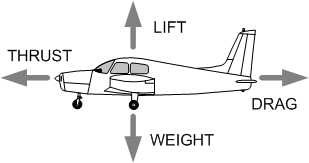
Before an individual can receive a private pilot licence or recreational pilot permit, he or she must demonstrate both flying skill and knowledge.44 Flying skill is demonstrated to a designated Transport Canada examiner on a flight test, and a specified number of dual and solo hours flight training must be completed before the flight test can be attempted. In contrast, general knowledge of various subjects related to flying is demonstrated by successful completion of a Transport Canada multiple-choice written examination; before a student pilot can write the examination, he or she must complete the Groundschool requirements, complete 10 hours of flight training, and obtain the required Medical Certificate. The purpose of this course is to prepare the student pilot for the written examination. By introducing the student to such subjects as the theory of flight, airframes and aero engines, meteorology and navigation, airpersonship and flight procedures and rules, he or she will acquire knowledge to successfully write the written examination and to safely enjoy the art of flying.
While the Canadian Aviation Regulations require a minimum of 40 hours of Groundschool instruction, Langley Flying School students receive approximately 100 hours of instruction. The Privatre Pilot Groundschool runs year round, with both full-time and part-time sessions. For information related to full-time studies, see the Professional Pilot Program link. Part-time studies (evening groundschool) provide three sessions per year, beginning in September (Fall Session), February (Spring Session), and June (Summer Session). The Spring Session begins in February and ends in late May, the Summer Session begins in June and ends in late August, and the Fall Session begins in September and ends in the middle of December. The Groundschool class meets two evenings per week (traditionally Tuesday and Thursday evenings from 7pm to 9:15 PM) and a tutorial meeting is held on the weekend (students may join either the Saturday or Sunday Tutorial). For information pertaining to current groundschool schedules, see the Groundschool Schedules link.
Tutorials
Tutorials are led by Teaching Assistants appointed from students who are enrolled in Langley Flying School’s Commercial Pilot Program or Instructor Rating Program. The Tutorials are designed as informal instruction sessions that further develop and apply knowledge and skills learned in the Groundschool classes, especially in the subjects of navigation and weather information; they provide an excellent group forum in which students can prepare and practice collectively for Transport Canada’s written examination.45 The Tutorials traditionally run as two sessions, the first on Saturdays from10 AM to 12 noon, and the second on Sundays from 1 PM to 2 PM.
Groundschool Evaluation
Determination of Final Grade for the Groundschool is based on the following items:
|
Review Quizzes (Seven) |
35% |
|
Final Examination |
45% |
|
Class Attendance and Participation |
10% |
|
Tutorial Attendance and Participation |
10% |
.jpg?size=medium) To be recommended to write the Transport Canada Private Pilot examination, students must attain a minimum course grade of 65%. Additionally, before students can write the Final Examination, they must complete seven Review Quizzes (each quiz consisting of five to twenty multiple choice questions), to be written in class; the questions used in the Review Quizzes will be extracted from the study questions that appear at the end of each chapter of Langley Flying School Initial Groundschool Manual. Passing mark on the Review Quizzes is 60%, and in the event of a failure may be rewritten. The Review Quizzes may be written any time during the term for those students undertaking accelerated home study. Students are encouraged to submit completed study questions for review and correction by the instructor.It is impossible to cover in class all of the material associated with the Transport Canada examination. How well a student does depends directly on his or her efforts in reading, studying at home, and asking questions in class.46 To get the full benefit of class discussions, students should complete the assigned readings prior to class.Transport Canada requires that Groundschool attendance for individual students be maintained at the school in a Pilot Training Record. Students pursuing accelerated home study must carefully record the times and dates when they study; these times and dates will then be transcribed onto their Pilot Training Record and used in place of class attendance times.
To be recommended to write the Transport Canada Private Pilot examination, students must attain a minimum course grade of 65%. Additionally, before students can write the Final Examination, they must complete seven Review Quizzes (each quiz consisting of five to twenty multiple choice questions), to be written in class; the questions used in the Review Quizzes will be extracted from the study questions that appear at the end of each chapter of Langley Flying School Initial Groundschool Manual. Passing mark on the Review Quizzes is 60%, and in the event of a failure may be rewritten. The Review Quizzes may be written any time during the term for those students undertaking accelerated home study. Students are encouraged to submit completed study questions for review and correction by the instructor.It is impossible to cover in class all of the material associated with the Transport Canada examination. How well a student does depends directly on his or her efforts in reading, studying at home, and asking questions in class.46 To get the full benefit of class discussions, students should complete the assigned readings prior to class.Transport Canada requires that Groundschool attendance for individual students be maintained at the school in a Pilot Training Record. Students pursuing accelerated home study must carefully record the times and dates when they study; these times and dates will then be transcribed onto their Pilot Training Record and used in place of class attendance times.
Groundschool Required Equipment
- E6B Flight Computer (or equivalent)47
- ICAO Chart Rule or Navigation Plotter 48
- Douglas Protractor 49
- Vancouver VFR Navigation Chart.
- Vancouver VTA Navigation Chart.
Groundschool Required Texts
|
David Parry, 2020 |
Langley Flying School Initial Groundschool Manual Langley: Langley Flying School, Inc. |
| David Parry, 2020 |
Langley Flying School Flight Training Handbook Langley: Langley Flying School, Inc. |
|
Sandy A. F. MacDonald, 2000 |
From the Ground Up (twenty-ninth Revised Edition) Ottawa: Aviation Publishers Co. Limited |
| Piper Aircraft Corporation |
Piper Cherokee Pilot Information Manual |
Recommended Texts
|
Kent Johnson and John Mullock, 1996 |
Aviation Weather Hazards of British Columbia and the Yukon Kelowna: Source Graphics and Print Co. Ltd. |
|
|
William K. Kershner, 1994 |
The Advanced Pilot’s Flight Manual (6th Edition) Ames: Iowa State University Press |
|
|
Peter F. Lester, 1995 |
Aviation Weather Englewood: Jeppesen Sanderson, Inc. |
|
|
Richard L. Collins, 1977 |
Flying Safely New York: Delacorte Press/Eleanor Friede |
|
|
Michael J. Culhane (current issue) |
Private Pilot and Recreational Pilot Written Test Book Richmond: Accelerated Aviation Training |
|
| Transport Canada (current issue) | ||
Groundschool Outline
Section I LICENSING REQUIREMENTS50
Section II AIRFRAMES, ENGINES AND SYSTEMS—PART I51
Section III AIRFRAMES, ENGINES AND SYSTEMS—PART II
Review Quiz #1: Licensing Requirements and Airframes, Engines and Systems.
Section IV AERODYNAMICS AND THEORY OF FLIGHT52
Section V CANADIAN AVIATION REGULATIONS53
Review Quiz #2: Aerodynamics, Theory of Flight and the Canadian Aviation Regulations.
Section VI FLIGHT OPERATIONS (Airpersonship) 54
Section VII HUMAN FACTORS AND PILOT DECISION-MAKING55
Review Quiz #3: Flight Operations—Part I (Airpersonship), Human Factors and Pilot Decision-Making.
Section VIII METEOROLOGY—PART I (GENERAL) 56
Section IX METEOROLOGY—PART II (ACTIVE WEATHER)
Review Quiz #4: Meteorology—Part I (General).
Section X METEOROLOGY—PART III (WEATHER INFORMATION)
Review Quiz #5: Meteorology—Part II (Weather Information).
Section XI FLIGHT OPERATIONS (AERONAUTICAL FACILITIES) 57
TRIP TO LOCAL CONTROL TOWER
Section XII NAVIGATION. 58
Review Quiz #6: Navigation.
Section XIII RADIO AND ELECTRONIC THEORY (RADIO NAVIGATION) 59
Section XIV FLIGHT INSTRUMENTS. 60
Review Quiz #7: Radio Navigation and Flight Instruments.
FINAL EXAMINATION61
For additional information, see our page Frequently Asked Questions, as well as Getting Started.
1 Any person with special concerns regarding the application of these prerequisites should contact the Chief Flying Instructor directly.
2 Fourteen is the minimum age at which a student can undertake Solo Practice as the sole occupant of the aircraft under the supervision of a Flight Instructor.
3 This cost is made up as follows: Pilot Examiners fee $250; Transport Canada written examination fee: $150; Transport Canada licence fee: $55; and the English Language Proficiency Test fee: $75. With respect to flight test fees, be aware that these are set by individual Pilot Examiners and are subject to variation and change without notice.
4 For Dual Air Instruction, the student occupies the left pilot seat and the Flight Instructor sits in the right passenger seat—the aircraft, of course, is equipped with complete dual flight controls.
5 All Solo Practise flights are supervised by a Flight Instructor who, prior to the flight, certifies that the student is competent and safe for the planned exercises to be practised during the flight.
6 Pre-flight Briefings, as well as Post-flight De-briefings, are conducted one-on-one.
7 See “Groundschool.”
8 The importance of efficient and adequate preparation by the student prior to training flight cannot be over emphasized. So much of flying is simply memory and practise work—effective memory and practice can create student familiarity without having any need to strap into the pilot seat. In addition the Flight Training Manual published by Transport Canada (used by all flying schools in Canada), the Langley Flying School publishes a comprehensive Flight Training Student Handbook, which reviews in extensive detail the finer aspects of flying needed to properly complete each exercise to flight test standard—it is specifically written for Langley Flying School’s aircraft, Langley Airport, and the Lower Mainland training environment.
9 A Certificate of Airworthiness demonstrates to the pilot that the aircraft has been inspected by Transport Canada and they have verified that it conforms with the “Type Certificate” issued by Transport Canada to the manufacturer of the aircraft—in the case of Langley Flying School, the Piper Aircraft Corporation. The Certificate of Airworthiness remains in effect for the life of the aircraft, provided it is maintained in accordance with the standards required by Transport Canada and the manufacturer.
10 Manoeuvring an aircraft during taxi takes a surprising amount of getting used to it—and practice; likely for the first time, you will have to “steer” with your feet—the rudder pedals, of course, control the nose gear.
11 As the aircraft increases airspeed, the nose of the aircraft—as viewed by the pilot—lowers relative to the natural horizon; the reverse is true with a decrease in airspeed—i.e., the nose rises relative to the horizon. Flaps are a control surface on the wing that the pilot extends into the airflow when manoeuvring at slower speeds—for example, during landings and takeoffs; the use of flaps increases the responsiveness of the pilot controls, and generally makes control less “mushy.”
12 Owing to the nature of Earth’s magnetic field, the magnetic compasses of aircraft produce errors during turns and during airspeed changes.
13 The sequence of actions used by a pilot to enter a climb, for example, is different from the sequence used to enter a descent. The differences are subtle, yet important. Also, a climb or descent must make effective use of power—in a descent, for example, the pushing forward of the control column will clearly produce a descent, but without a proper reduction in power, the aircraft will also accelerate, which of course is not always desired (in a descent for approach, for instance, speed precision and control is crucial).
14 Turns with 45° of “bank” are one of the most difficult manoeuvres required for the Flight Test; they must be continually practised throughout the training program—the standard applied during a student’s Flight Test for this exercise is that the aircraft, during the turn, must be kept within 100’ of the assigned altitude, the speed must not vary more than 10 knots, and the roll-out on to heading must be within 10° of an assigned “roll-out” point. At this stage in the training, however, students are essentially introduced to 45°-banked turns, and further practice of this manoeuvre is deferred until after the student has successfully completed solo flight.
15 The Vancouver area is witness to some of the highest air-traffic density in Canada, and the maintenance of safe separation from vicinity traffic is an ongoing prime concern of Langley Flying School and its instructional staff.
16 Flight for Maximum Range and Endurance is not a Flight Test item. There are essentially two ways to determine the Maximum Range and Endurance for a given aircraft, the first is from the Pilot Operating Handbook, which provides a series of aircraft “performance” graphs related to these, and many other, conditions of flight—students during this exercise learn how to properly interpret and apply information contained in these graphs. The second method is referred to as the “practical” or “experimental” technique to determine Maximum Range and Endurance—this method essentially entails the pilot gradually and systematically changing the “power setting” of the aircraft, and then observing the effects of these changes on the aircraft’s airspeed indicator (similar to an automobile speedometer)—these procedures are generic to all aircraft.
17 Slow flight is defined as the speed-range that extends from just above the stall (below which the speed of the wings is too slow to sustain lift) to the speed for maximum endurance. The features of slow flight include a high “angle of attack” (high nose), high power settings, poor pilot visibility, and “sloppy” controls. Like steep turns, slow flight is one of the more difficult manoeuvres to perform on a Flight Test, with the Examiner requiring the student to demonstrate the safe and precise manoeuvring of the aircraft at a speed just above the point of stall.
18 It is worth noting that stalls are not entirely undesirable as full-stall landings are in many instances proper landing technique—in all landings, pilots approach the stall just before touchdown; knowing exactly when an aircraft will stall is critical knowledge that a student must acquire. At the point of a stall, the aircraft controls do not function normally as there is no longer a smooth flow of air over the control surfaces manipulated by the pilot. Indications to the pilot of a stalled condition include “stall buffeting” (the control column “shakes”), and the nose drops rather suddenly. To recover from a stall, the pilot must push the control column smoothly forward to immediately decrease the angle of attack (from a nose-high position). The thing about the stall is that if one wing is allowed to inadvertently drop, the aircraft could progress into a “spin” condition” (discussed below); while a stall takes only one to two hundred feet to recover from, a spin recovery could take as much as a thousand feet! Recovery from stalls and spins can only be practised when aircraft certification provides for this—flight training aircraft typically have this certification, but the aircraft must meet specified passenger and fuel loading requirements. For non-training aircraft, stalls, and spins must at all times be avoided for safety reasons.
19 Autorotation, to the observer, appears as a slowly descending aircraft that is simultaneously rotating quite tightly around a vertical flight path—to the pilot at the controls, however, the world appears to be “spinning.” Commonly, a spinning aircraft can fall a thousand feet in only a few seconds—quite exciting. The Canadian Aviation Regulations require that all spin recoveries be accomplished not less than 2000’ above the ground, or the recovery altitude specified by the aircraft manufacturer, whichever is highest—in the case of the Piper Cherokees operated by Langley Flying School, the manufacturer requires that spin recovery be accomplished not less than 3000’ above the ground.
20 All aircraft have a “never-exceed” speed. This speed is marked on the aircraft’s airspeed indicator by a red “radial” line. If you were to exceed this airspeed, the pressure loading on the aircraft surfaces will theoretically compromise the structural integrity of the “airframe.” In the case of the Piper Cherokee, this never-exceed speed is 171 MPH (or 275 KPH). Importantly, however, all “factory” aircraft such as the Cherokee are built to take considerable “wing loading” pressure—with the aircraft properly configured for training, the wings are certified to withstand as much as 9460 lbs. of force (the maximum aircraft takeoff weight is only 2150 lbs.). It is worth noting that the manufacturers of “ultra-light” aircraft—in which the carrying of passengers is prohibited— are not required to meet these stringent loading requirements; this, combined with other higher certification requirements—accounts for the higher operating and training costs of “factory” aircraft.
21 Interestingly, to recover from a spiral dive, the pilot must first level the wings of the aircraft prior to pulling back on the control column and recovering from the dive—if the wings are not levelled first, the spiral dive will simply tighten up and airspeed will continue to increase dangerously.
22 Turning an aircraft from a head-wind to a tail-wind can produce a tremendous illusion of acceleration when flying near the ground—the hazard occurs when the pilot inadvertently attempts to slow the airspeed. A similar hazard occurs when aircraft is turned—the aircraft appears to “skid” to the outside of the turn, or “slip” to the inside of the turn—again, it can be hazardous if the pilot attempts to “correct” this illusions of wind drift. Incidentally, the Canadian Aviation Regulations limit the minimum altitude an aircraft can fly; over a built-up area such as a town or city, an aircraft cannot descend below 1000’ above any obstacle within a 2000’ radius; when not over towns or cities—referred to as a “non-built-up area”—an aircraft cannot descend below 500’ above any person, building, structure or vessel within a 500’ radius. Low flying is not a Flight Test exercise, but it is examined in conjunction with other exercises requiring low flying, such as the “precautionary landing.”
23 In contrast landings, “takeoffs” are relatively easy and students quickly master how to conduct a takeoff.
24 Prior to being released for their first solo flight, students must write a series of examinations related to aircraft knowledge, flight emergencies, and air law; they must also demonstrate that they can glide an aircraft safely to the ground from any position in the circuit without the use of the engine—this are referred to as a “simulated forced approach.” Prior to releasing a student for the first solo circuit, the Instructor is required to certify in writing that the student has reached a satisfactory level of skill and knowledge and is able to safely conduct solo flight. A student’s first solo flight is a defining moment—just consider how many few human beings have achieved this—and it is something that, quite literally, you will never forget.
25 Precautionary landings are crucial in that they are commonly used to “avoid” an emergency. Light aircraft—including the Piper Cherokee—can land in as little distance as 600’; what is important, however, is that the surface selected for a landing is both smooth and firm, and that the pilot properly uses “soft-field” technique.
26 The engines in the aircraft used by Langley Flying School (factory-built aeroplanes approved and certified by Transport Canada) are designed not to “quit,” and an example of this is the redundancy that is designed into the engine—dual magneto ignition that does not require an electrical source, dual fuel pumps (electrical and mechanical), dual fuel tanks, etc. Additionally, complete and thorough inspections of the aircraft are required at intervals specified by Transport Canada and the aircraft manufacturer (stringent inspections and systems redundancy is not required, for example, with “ultralight aeroplanes”). In the case of Langley Flying School aircraft, this inspection occurs every 100 hours flying time (in the case of the single-engine Piper Cherokee Cruisers used for initial training), or every 50 hours (in the case of our advanced multi-engine Piper Seneca). Furthermore, the engines must be completely overhauled after they have accumulated the “air time” limits specified by Transport Canada and the manufacturer. All of these safeguards make forced landings of factory aeroplanes extremely rare—pilots with several thousands of hours have never had a forced landing. Nevertheless, every pilot must be prepared to deal with the emergency of an engine failure—hence the importance of this training. Incidentally, the average Recreational Pilot only flies approximately 125 hours per year; also, almost all forced approaches that do occur are caused by fuel starvation and the mismanagement of fuel by the pilot.
27 This configuration is based on a specified indicated airspeed published in the Pilot Operating Handbook—the must immediately establish the aircraft at this speed in the event of an engine failure (the pilot controls the airspeed by controlling the angle of attack); maximum-distance glide airspeed is determined by the manufacturer of an aircraft in accordance with certification standards established by Transport Canada (and the U.S. Federal Aviation Administration), and as the name implies, this is the airspeed at which an aircraft will glide the maximum distance for a given altitude.
28 Interestingly, a trip from Vancouver to Calgary takes 12 hours to drive, but only 3 hours to fly in the Piper Cherokee (two hours in the Piper Seneca), but the speed of an aircraft over the ground depends on the movement of the air mass through which an aircraft flies. It is only when a pilot obtains the “upper winds” for a trip that the actual groundspeed can be predicted—groundspeed is crucial for predicting the quantity of fuel required for a flight.
29 “Impromptu” navigation means the routing was not planned prior to departure; therefore, all preparations must be made in the cockpit during flight—the cockpit can be a very cramped and busy place and “diversions” require skill and practice.
30Cross-country training flights normally include flights to Victoria Airport, Nanaimo Airport, Sechelt-Gibsons Airport, Chilliwack Airport, Pitt Meadows Airport, and Abbotsford Airport. The view is spectacular, with the Coastal Mountains on one side, and the Straight of Georgia on the other—of course, this is the reason why most of us learn to fly!
31 The “flight instruments,” in their standard form, consist of six instruments that are positioned directly in front of the pilot’s seat and provide all necessary information needed to fly the aircraft without looking out of the cockpit. The trick is to conduct a proper “scan” whereby the pilot continually examines all of the flight instruments without fixating on any one instrument.
32 Private Pilot students receive a minimum 5-hours instrument flying, and to obtain a Night Rating must complete an additional 5 hours of instrument instruction; to obtain an Instrument Rating (which permits pilots to conduct takeoffs and landings in cloudy conditions) requires a total of 40 hours instrument flying (an additional 30 hours of training following the completion of the Private Pilot Licence and the Night Rating.
33 Students must successfully demonstrate instrument flying on the Flight Test, including recovery from unusual attitudes. Of the 5 hours of instrument training required, 3 hours is completed on the simulator.
34 The vital actions taken by a pilot in response to an emergency are planned in two Phases. Phase I actions must be acted upon immediately and must therefore be memorized—in the event of an engine fire, for example, the fuel must be immediately turned off and the vents between the engine compartment and the cabin (used for defrosting windows and heating the cabin) must be sealed; Phase II items are derived from the pilot checklist—items which must be checked to ensure actions have not been missed.
35 Typically, students are overly concerned with radio communication—commonly they fear making mistakes. The secret is to think of the radio as a telephone—it really is no different. Most of radio traffic at Langley Airport is from training pilots and the staff at the Control Tower understand and facilitate this. Instructors commonly use bad-weather days to send their students up to the Control Tower to meet the controllers and learn about Tower equipment and procedures. Pilot Students are quick learners—it usually doesn’t take long before they sound like Air Canada Captains!
36 The material contained in Section V of the Langley Flying School Initial Groundschool Manual, and the material related to medical “human factors” in Section VI of this Manual are designed to prepare students for the PSTAR examination.
37 This examination is to ensure that all students are knowledgeable of engine start-up emergencies.
38 The purpose of this examination is to provide instructors with feedback concerning how well they have been doing their job—for this reason, the material addressed by this examination is very general and basic in nature but is, nevertheless, important for the student to know.
39 The pilot of an aircraft must hold a radio operator’s licence and qualification for this largely includes knowledge of emergency radio transmission procedures.
40 This examination, in addition to the Transport Canada’s PSTAR Examination, ensures that all student who conduct their first solo flight have sufficient safety knowledge with respect to Langley Flying School training operations and procedures, Piper Cherokee emergency procedures, as well as Langley Airport air traffic procedures.
41 Similar to the PRESOL Examination, the PREPRAC Examination ensures student safety knowledge prior to being authorized to leave the airport circuit to practice “upper air” exercises. Prior to being released to the “practice area,” student must have a working knowledge of the departure and arrival procedures at Langley Airport.
42 The Canada Flight Supplement (CFS) is essentially a directory of all airports in Canada, and outlines for the pilot important information with respect to arrival and departure procedures. Each of the School’s aircraft has a current CFS on board.
43 These examinations qualify students to fly solo to specific airports other than Langley Airport—Victoria Airport, Abbotsford Airport, Nanaimo Airport, etc.—and ensures a standard of knowledge and safety with respect to the arrival and departure procedures at these airports.
44 The information that appears in this and subsequent paragraphs concerning Groundschool are transcribed from the course syllabus contained in Langley Flying School’s Initial Groundschool Manual.
45 We consider Langley Flying School’s Tutorial system to be a major contribution to the success of our initial Groundschool programs. The success of Tutorials is routed in the high calibre of our Teaching Assistants, and the effort and energy they apply in Tutorial sessions.
46 Langley Flying School maintains a very effective “Intel File” that is a collection of notes made by students who have written various Transport Canada examinations; the Intel File informally describes the recollection of students concerning material contained on the examinations.
47 The E6-B is the generic name applied to various types of circular slide rulers that are specifically designed for pilots. This instrument—specifically designed for pilots—provides quick and easy calculation of such things as the effects of wind on groundspeed and aircraft heading, fuel consumption, fuel endurance (time), true airspeed (airspeed corrected for altitude, temperature, and pressure). An electronic version of the E6-B is also available.
48 The Chart Rule or Navigation Plotter is quite simply a ruler specially designed for use by pilots on navigation charts. The Navigation Plotter includes a Protractor designed to measure cross-country tracks.
49 The Douglas Protractor is an instrument designed to measure cross-country tracks on aviation charts.
50 This section examines the various licences and ratings that are issued by Transport Canada, with a review of both the flying privileges of the Recreational Pilot Permit, as well as the privileges of higher ratings available to Recreational Pilots, including the Seaplane Class Rating and the Multi-engine Class.
51 The section consists of two parts, the first examines various structural and design features of aircraft, including the flight control systems and features common to general aviation aircraft, while the second part focuses on aeroplane engines and the various systems associated with the generation of propeller thrust.
52 This section focuses on the theoretical principles of flight, including the four aerodynamic forces associated with flight (lift, drag, thrust, and weight), the “stalled” conditions and factors that affect stalls, and the aerodynamic of “spins.” Also examined in this section are the four aerodynamic “attitudes” of an aeroplane during flight—cruise, climbing, descending, and banked attitudes—and the three movements controlled by the pilot—pitch, roll, and yaw. The somewhat different forces exerted on an aircraft during a turn are examined, and examination is also made of the various climb configurations commonly used by pilots—the “best rate” climb, the “best angle” climb, and the “en route” climb.
53 This Section examines the vast array of regulations and laws governing flight operations in Canada, focusing on the classification of airspace in Canada, the application and requirements of published “weather minimum” (i.e., minimum flight visibility and cloud separation required for the different classes of airspace), the rules associated with operating an aircraft in the vicinity of airports, both controlled (with a control tower) and uncontrolled, and the rules governing minimum and maximum flight altitudes. This section also reviews the pilot’s legal obligations with respect to passenger briefings, the use of supplemental oxygen, flight planning, aircraft equipment, and radio communications.
54 This section focuses on operational considerations associated with flying, including pre-flight aircraft weight and balance calculations, the effects of aircraft loading on aircraft performance, landing errors, landing rules of thumb, collision risks and avoidance, bird-strike risks and avoidance, special considerations for flight over water, the effects of temperature and air pressure on aircraft performance, special considerations for flight in mountainous areas, aircraft fuelling procedures and considerations, and human factors affecting pilots—e.g., hypoxia and vertigo.
55 Going back to the early 1970s it has been realized that the in-flight “decisions” made by pilots—in particular bad decisions—have been a major cause of aircraft accidents. This section examines the various elements of the decision-making process typically used by pilots in critical situations where flight safety is affected. The importance of pilot “situational awareness” is examined, as well as the common factors that lead to the dangerous “loss of situational awareness” and its potential consequences. The general attitudes of pilots are examined—both the potentially “dangerous” attitudes and the “safe” attitudes.
56 This and the following sections examine the pervasive role of weather in flying. Weather is responsible for creating some of the most awe-inspiring conditions of flight, but it is also responsible for creating some of the most hazardous conditions. Students are introduced to the fundamental processes that govern weather conditions and changes in the weather, with focus on the air masses commonly encountered in Canada, the atmospheric pressure changes that govern the movement of these masses, and the frontal weather that is produced where the different air masses come into contact with one another. Students also learn how to interpret the rather specialised weather information produced for pilots and aviation in general.
57 This section of the course consists of a tour of a radar-equipped control tower in which students view first hand the highly specialized work place of air traffic controllers and the tools of their trade.
58 In this section students learn how to systematically prepare for a cross-country flight, including map reading, map preparation, flight planning (including consideration of surface and upper winds), fuel consumption planning, preparing a NavCanada Flight Plan, and conducting a briefing from a Flight Service Specialist. Students learn how to estimate the time en route for a trip based on predicted groundspeed, and also learn how to conduct actual groundspeed checks during flight for the purpose of revising estimated landing times.
59 This section introduces students to the vast array of electronic navigation facilities that exist throughout Canada (and the world for that part) to aid pilots in air navigation. Included is the variety of land-based electronic systems and how they work, as well as the electronic display systems in the cockpit and how the pilot interprets them.
60 The flight instruments are composed of six instruments that are positioned directly in front of the pilot. They consist of the Airspeed Indicator, the Attitude Indicator, the Altimeter, the Turn Co-ordinator, the Heading Indicator, and the Vertical Speed Indicator. This section examines how these instruments operate and the crucial in-flight information they provide to the pilot.
61 This final examination is designed so as to provide a highly accurate prediction on how well our individual students will perform on the Transport Canada Private Pilot examination.
.jpg)
.jpg?size=medium)
.JPG?size=medium)
.JPG?size=large)
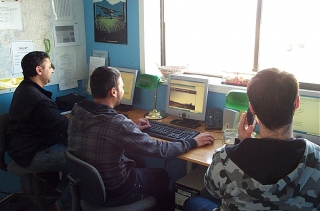

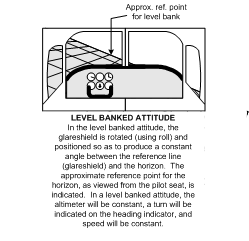
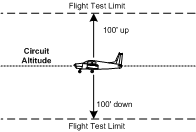
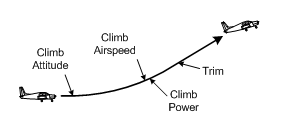


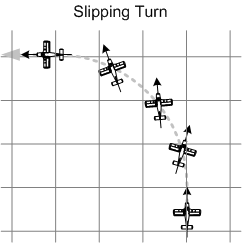

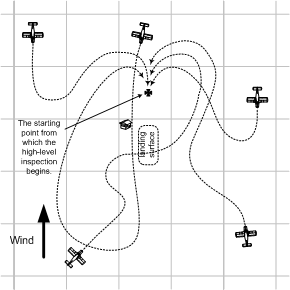
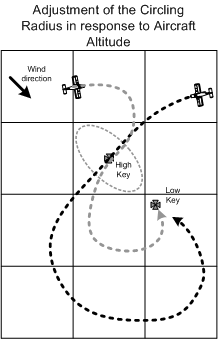
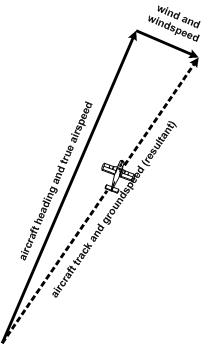

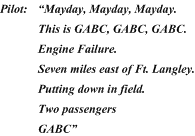
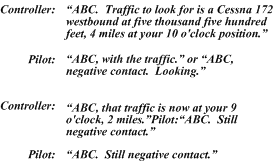
.JPG?size=medium)
.JPG?size=small)
.jpg?size=small)
.JPG?size=small)
.jpg?size=medium)

.JPG?size=medium)
